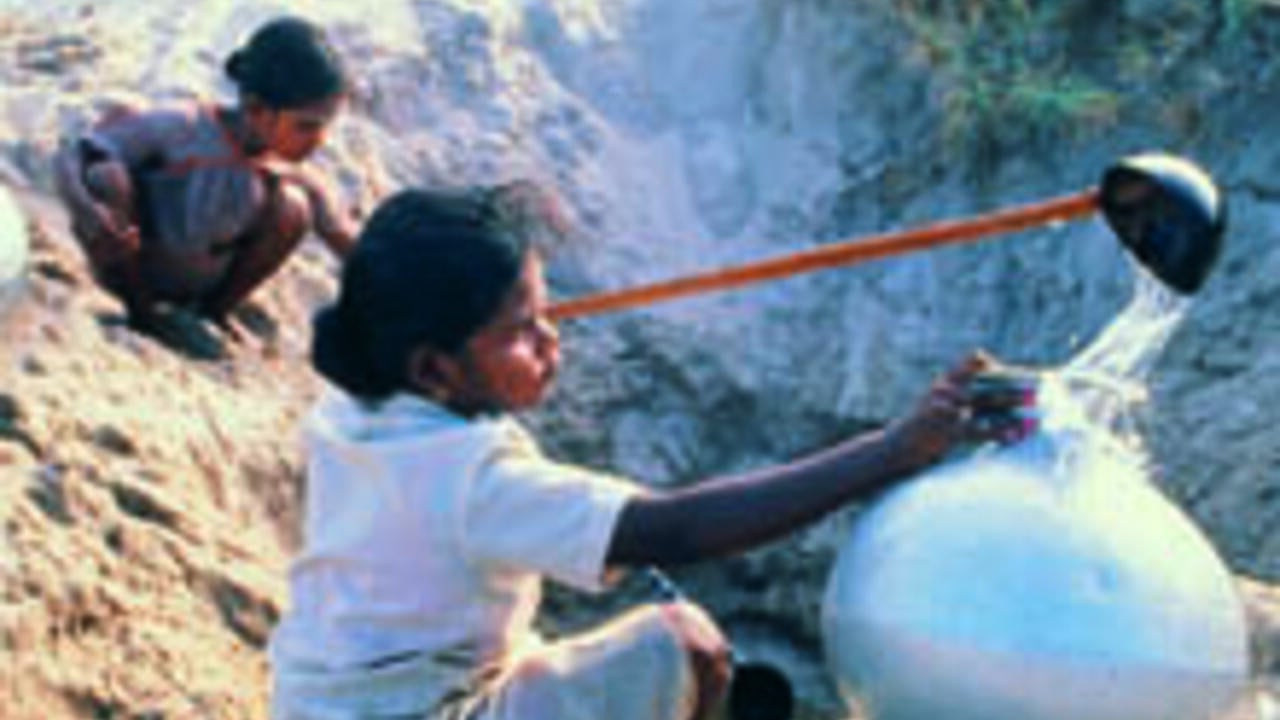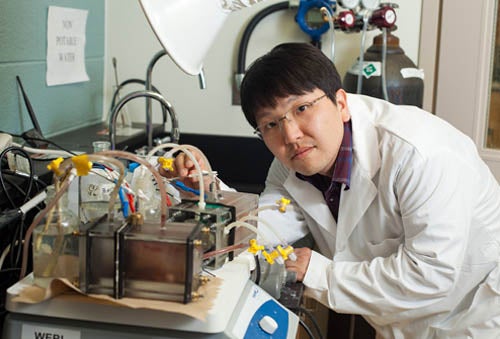
Giving people a simple way to test their drinking water
“Many children die from water-borne pathogens, so let’s do something to help them,” says Waterloo engineering researcher

“Many children die from water-borne pathogens, so let’s do something to help them,” says Waterloo engineering researcher
By Christian Aagaard Marketing and Strategic CommunicationsA woman returns to her dusty village carrying two bottles of water filled from a pool two hours away.
What happens next puts Hyung-Sool Lee on edge. In the typical scenario, repeated daily in dry villages around the world, she fills a bowl for her thirsty toddler.
The child may later become a grim statistic — one of 760,000 children under five years of age swept away by diarrheal disease every year.
Harnessing electricity that bacteria produce

“There is no protection, no filtration, but (that water) comes from the only accessible source,” says Lee, an assistant professor in the Department of Civil and Environmental Engineering at the University of Waterloo. “Many children die from water-borne pathogens, so let’s do something to help them.”
As head of the Waterloo Environmental Biotechnology Lab, Lee knows both the harm bacteria can cause — and the good they can bring. The lab looks for better ways to treat waste, possibly harnessing the electricity bacteria produce as they break down sewage.
That electrical opportunity has Lee aiming for a different outcome for the woman in the village. Armed with a simple electronic testing device, she would know whether the water is safe to drink.
Lee and four U.S. researchers recently reported on promising developments with thin, paper-based fuel cells that produce just enough electricity to drive simple, inexpensive diagnostic tools. Their work was published in December in Biosensors and Bioelectronics.
Close cousins to batteries, fuel cells produce a charge through chemical or biological processes.
In a microbial fuel cell, electrons produced by bacteria digesting organic matter in an oxygen-free chamber attach themselves to an anode. Positively charged hydrogen ions move through a membrane to a cathode in a separate oxygenated chamber. When the cathode and anode are connected, current flows.
Treated papers, the researchers say, can replace bulky anode and cathode chambers.
Lee is writing grant proposals and looking for backers to develop a water-sampling device about the size of a computer thumb drive.
A user would put a few drops of water in one side of the device, give it a shake, and wait a few minutes for the reaction to work.
Bacteria in contaminated water would generate a charge across a paper-based cell, lighting a diode or changing the colour of a panel.
That illuminating bit of knowledge could save a life.
“I’m really frustrated by the fact that children die of simple diseases in our society,” Lee says.

Read more
Here are the people and events behind some of this year’s most compelling Waterloo stories

Read more
Meet five exceptional Waterloo graduate students crossing the convocation stage as Class of 2025 valedictorians

Read more
Waterloo Engineering alum wears her iron ring proudly while building her career in quantum tech in Germany
The University of Waterloo acknowledges that much of our work takes place on the traditional territory of the Neutral, Anishinaabeg, and Haudenosaunee peoples. Our main campus is situated on the Haldimand Tract, the land granted to the Six Nations that includes six miles on each side of the Grand River. Our active work toward reconciliation takes place across our campuses through research, learning, teaching, and community building, and is co-ordinated within the Office of Indigenous Relations.